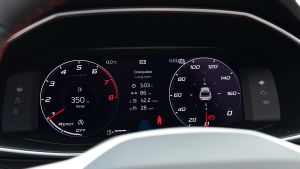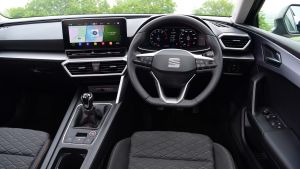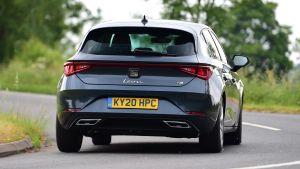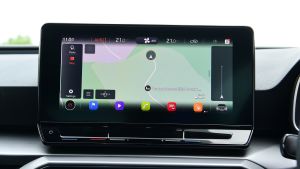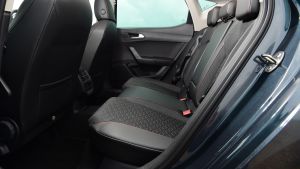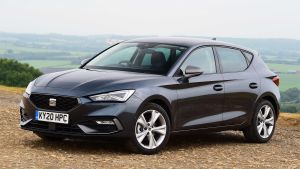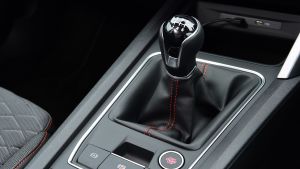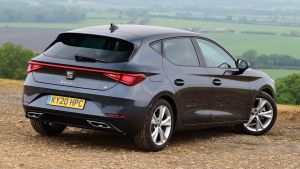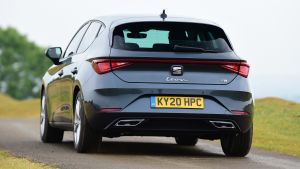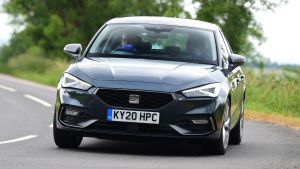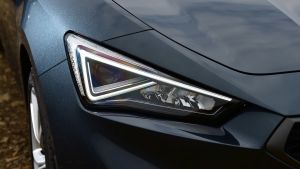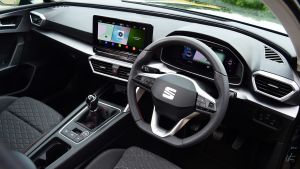Although it feels like an evolution of the old model, the fourth-generation SEAT Leon narrows the gap between it and the Volkswagen Golf. It doesn’t have quite the same wow factor as its more expensive rival, but it’s just as good to drive and features the latest digital technology.
Just as important is the fact that there’s significantly more rear space than before, which means it’s perfect for growing families. The boot is a little small for the class, but the Leon Estate is a practical alternative to the Skoda Octavia.
The Golf is more likely to impress your neighbours, and the Ford Focus is nicer to drive, but you’re unlikely to be disappointed with the new Leon.
About the SEAT Leon
The Leon has been a cornerstone of the SEAT range since 1999, when it replaced the Mk2 VW Golf-based Toledo. Since then, SEAT has shifted 2.2 million Leons globally, including around 250,000 in the UK.
The Mk4 Leon is the most advanced and safest version to date. Launched in 2020, it replaced a model that had been on sale since 2012. Like its predecessors, it’s based on the same platform as the VW Golf, which means it’s also closely related to the Audi A3 and Skoda Octavia.
- SEE MORE Best hatchbacks to buy 2020/2021
It sits above the Ibiza in the SEAT range, battling for showroom space against SEAT’s trio of SUVs: Arona, Ateca and Tarraco. There’s no three-door version, but a performance version is available in the form of the Cupra Leon.
For the first time, the Leon is available as a plug-in hybrid, with the e-Hybrid offering extremely low running costs and between 36 and 40 miles of pure electric range. There’s also a range of petrol and diesel engines, some with mild-hybrid technology, along with a choice of six-speed manual or seven-speed DSG automatic gearboxes.
The five-door hatchback will account for the majority of sales, but a Leon Estate is also available. The latter is the one to choose if you’re after something practical, because the hatchback’s 380-litre boot is a little on the small side. The Leon Estate offers 620 litres of luggage space. In both cases, the e-Hybrid’s battery pack robs the Leon of boot space.
There are five core trim levels: SE, SE Dynamic, FR, FR Sport, Xcellence and Xcellence Plus. Standard specification is high, with even SE cars offering 16-inch alloy wheels, LED headlights and rear lights, metallic paint, 8.25-inch touchscreen infotainment system, DAB digital radio, Apple CarPlay, Android Auto, rear parking sensors and cruise control.
Other models get a more impressive 10-inch touchscreen infotainment system and a 10.25-inch customisable SEAT Digital Cockpit. FR and FR Sport models feature lowered and stiffer suspension for a sportier feel, while Xcellence and Xcellence Plus models offer more luxury.
Leon hatchback prices start from around £20,000 for the SE 1.0 TSI Evo, rising to around £30,000 for the Xcellence Lux 1.5 eTSI DSG. Leon Estate prices range from close to £23,000 for the SE 1.5 TSI Evo, rising to around £30,000 for the FR Sport 1.5 eTSI DSG.
Rivals include the likes of the Volkswagen Golf, Mazda 3, Ford Focus and Vauxhall Astra, but the Leon also competes against cars such as the Kia Ceed and Hyundai i30, both of which offer longer warranties. In isolation, the SEAT Leon is a good car, but it’s more of an evolution than a revolution.
